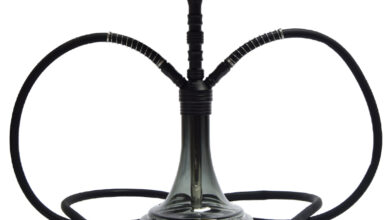How Alcoholics Anonymous Works

Since its conception in 1935, Alcoholics Anonymous (AA) has helped millions of alcoholics turn sober and build a better life for themselves and their families. AA has achieved the distinction of being one of the most effective ways to practice sobriety for almost a lifetime.
Who runs AA?
AA is run by nobody as such. There isn’t an authority. Nor is it run by doctors, therapists, or businesspeople, or even social workers. AA is simply a fellowship.
People who wish to improve their lives come together, meet, discuss, share, and find ways to live a sober and better life. There are people who become successful in their journey of sobriety, while some relapse and try again and become successful. While there are a few who stay doubtful and a few who relapse and quit trying.
What are the meetings of AA all about?
Alcoholics Anonymous meetings are more about self-motivation. First, you must have a desire to quit drinking. Once you are motivated enough to do something about your alcohol use disorder, the meetings can help you work towards your goal. Each member helps the other in becoming sober.
Today, more than 115,300 meetings are held across the globe. Members are in millions. Each meeting has a common format, but styles vary. AA follows the classic 12-step program, which was created by the founders of AA – Dr. Robert Smith and Bill Wilson. Many modern meetings may use versions of the program though.
How AA works
If somebody asks how Alcoholics Anonymous works, the answer is: it works wonders.
However, it works wonders only for those who have a burning desire to quit drinking and a strong resolve to achieve sobriety. They attend meetings regularly and complete each step of the 12-step program.
In the beginning, going through the 12 steps might seem a herculean task; but as you go about doing each step, you realize the wonders you were missing in life. You become aware that alcohol is redundant for a fulfilling existence. You gain more power over yourself, and this is when you become sober.
Alcoholism is nothing but alcohol gaining power over you. So you are compelled to drink despite harming yourself. When you declare this powerlessness and surrender to a Higher Power, you regain your own power. This is when your life starts to change. You get the strength to say “no” to alcohol.
But, as psychologists and therapists all over the world put it – change comes from within.
So, the pre-requisite of joining an AA meeting is the willingness to become sober. You shouldn’t be in a meeting just because somebody forced you to attend one or simply to oblige your family or friends. It won’t work this way.
For AA to work wonders for you, you must be in a meeting completely by choice.
Of course, families and friends can coax their alcoholic dear ones to attend a meeting. They may even attend an open meeting with the dear one (open meetings allow everybody) and see how it goes about.
But ultimately, it is the alcoholic who must decide what he/she wants to do in the end.
Do they wish to continue living with alcohol overpowering them?
Or do they wish to kick off alcohol and take charge of their lives?
Why attending meetings regularly works wonders
People who have recovered completely through an AA meeting in Connecticut recommend attending meetings regularly, especially in the first three months. People who participated in meetings daily consecutively for three months (90 days) were found to recover faster and better. They also had lesser chances of relapse.
In this context, it is better to find a meeting near you so that you can conveniently reach the venue. A meeting locator such as aa-meetings can help you find a meeting nearby.
Some of you may wonder: why the first three months?
It is usually the first step that is difficult. According to experts, the beginning phase of quitting alcohol is the most challenging one. You may also experience withdrawal symptoms. You need immense support and motivation at this time.
Suppose you skipped drinking today. It’s fine. The next day, you may get a slight craving; but you can still control it. However, by the third day, you will be fanatically searching for a drink. Your body and mind has adjusted to the effects of alcohol. Now it becomes difficult for your body and mind to live without the influence.
However, if you continue to attend your local AA meetings despite cravings, you strengthen your resolve to become sober. This is because you expose yourselves to the environment where people share the benefits of quitting alcohol. Constant bombardment of positive stories and continuous exposure to the positive vibes works towards empowering you to achieve your sobriety goal.
Thereafter, depending on your recovery status, you may continue to attend meetings daily or a few times a week. Gradually, you can decrease the frequency of participation. Some people attend meetings for a lifetime; that’s perfectly okay. If the meetings give you the necessary motivation to stay sober, then nothing should stop you from attending one.
Many people choose to attend meetings after recovery so that they can help new members recover. As per the 12 traditions of AA, one must work towards the welfare of others.
As a recovered person, you can become a sponsor for somebody who is struggling to stay sober. Or you can volunteer in the meetings.
Conclusion:
Meetings of AA are thriving since 1935. But how exactly a meeting in Connecticut will work for you depends on how you take it. It is rare for a person to not recover despite attending meetings daily and completing all 12 steps. Yet, relapses do happen.
But the path to success (in this case, sobriety) lies not in how many times you fail; but whether you try again and continue on the path.
So, even if you relapse, instead of blaming that AA doesn’t work, try again.
You can’t let alcohol win over you, can you?
For more information on finding a meeting near you, visit www.aa-meetings.com.



